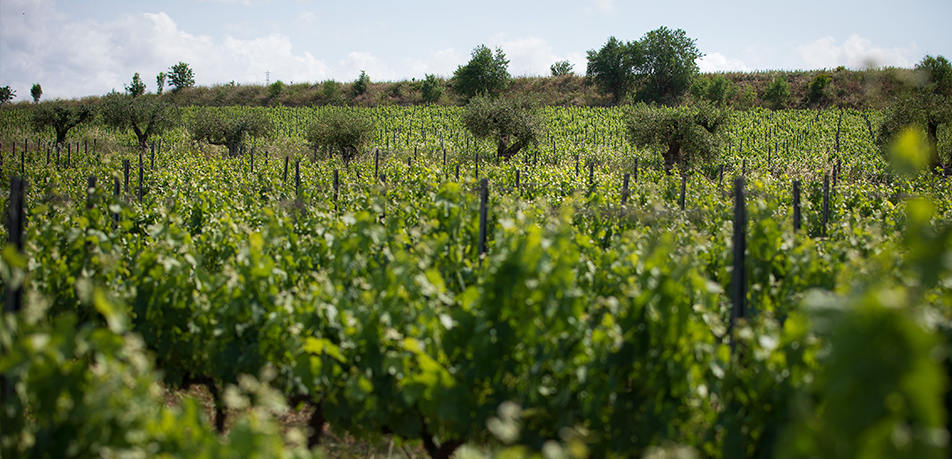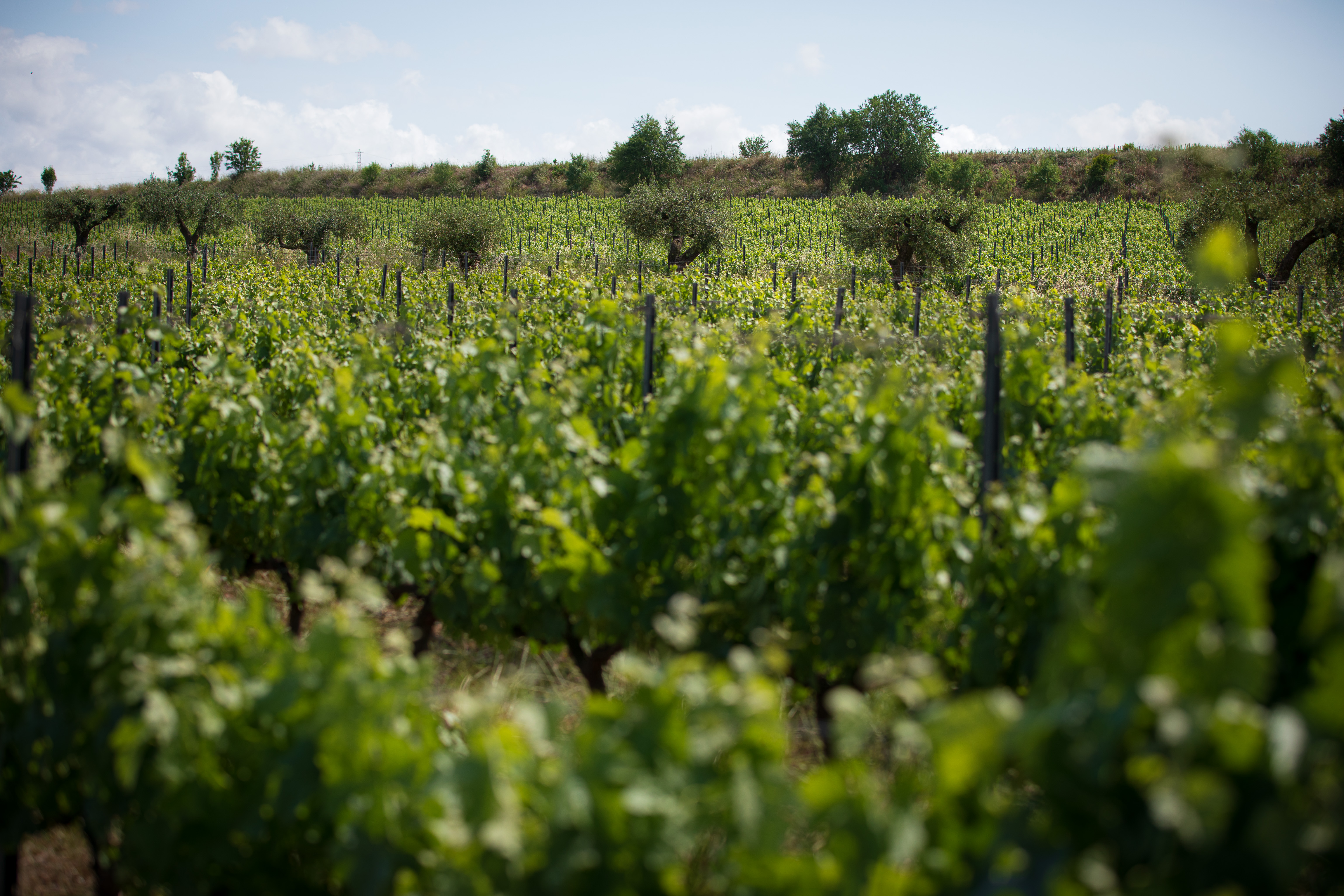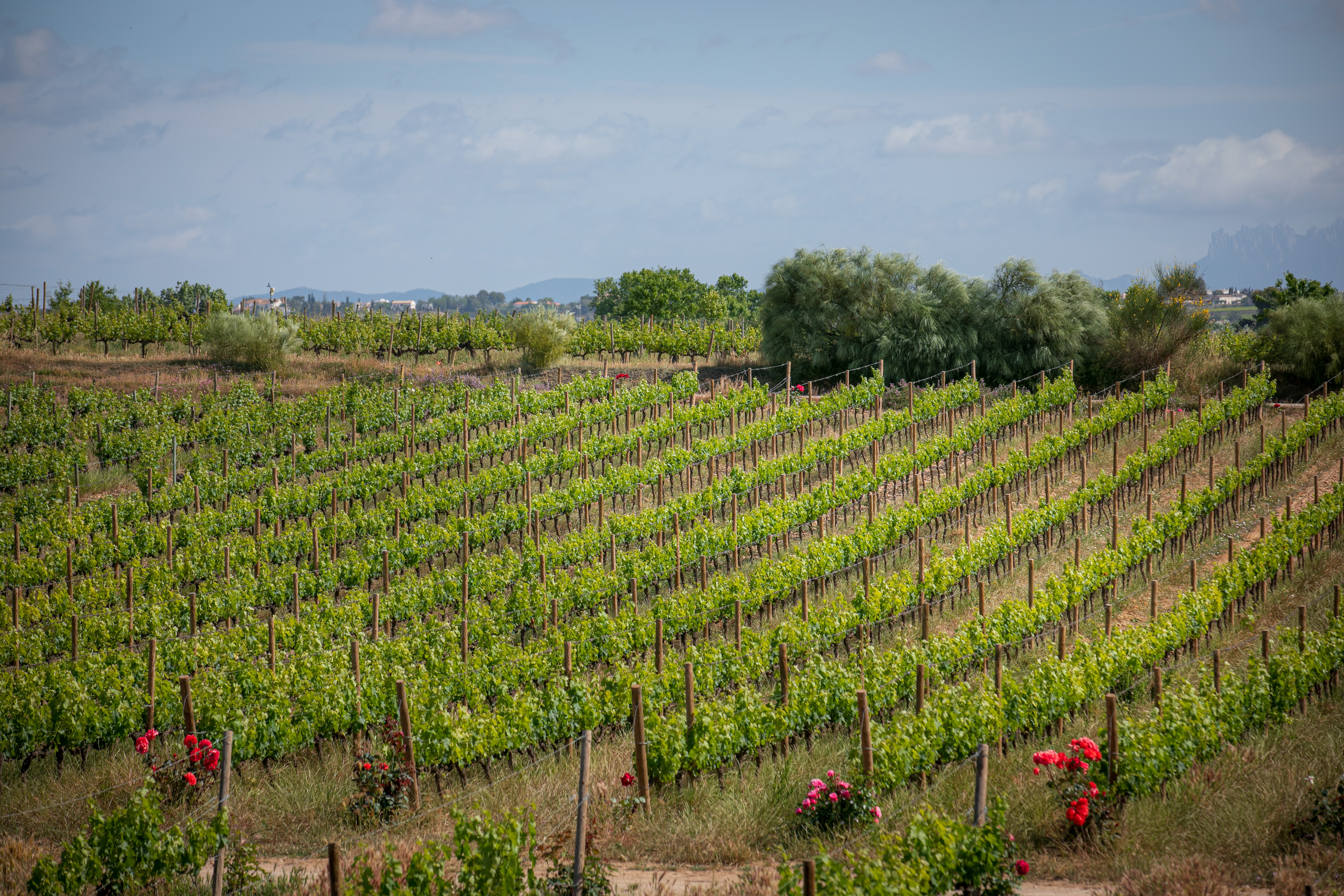CANOPY MANAGEMENT

Tending to grapevines involves a variety of practices, and today we're focusing on one particular area: canopy management, the various tasks this involves (which differ from dormant pruning), and the reasons why they are important.
What is it?
At all Familia Torres vineyards and estates, we carry out different tasks during the grapevines' annual growth cycle that are specifically aimed at the green parts of the plant. We do this to ensure the balanced production of healthy, high-quality grapes. We refer to these tasks collectively as "canopy management", because they involve the removal of green and/or leafy parts of the plant, as opposed to lignified or woody parts.

Mas La Plana vineyard in Pacs del Penedès, a Familia Torres property
Why?
The main objective is to remove secondary shoots, as well as shoots growing out of the trunk or below the arms (known as suckers) to drive sap concentration and nutrient accumulation to the fruit-producing shoots selected during dormant pruning.
At the same time, it is important to control the growth of the grapevine canopy to make sure the various plant organs and clusters receive the right amount of sun exposure and to facilitate other kinds of vineyard tasks.
How?
In contrast to dormant pruning, canopy management involves a variety of tasks that are carried out throughout the plant's annual growth cycle, each tackling a different aspect. In Spain, these tasks often have popular names that form part of the cultural heritage of each region, which means they may vary from place to place:
- Espergurado (Suckering): This is done after budbreak and involves the removal of so-called suckers – shoots which grow from the old wood, trunk, and arms of the vine – because they won't produce any fruit.
- Despunte (Tipping): After flowering, we cut off the tips of the shoots, because this is where the growth hormones of the plant are concentrated. By eliminating the tips, we also eliminate the chemical signals that stimulate primary shoot growth, which in turn encourages the growth of lateral shoots (which arise from secondary buds that are initiated during the same growth season as the primary buds).
- Desnietado (Lateral shoot removal): This task is carried out shortly after shoot tipping to prevent the growth of new shoots.
- Deshojado (Leaf removal): This involves the removal of leaves to manage the density of the canopy and open it up to facilitate air flow and thus prevent any potential fungal diseases.

Mas La Plana vineyard in Pacs del Penedès, a Familia Torres property
Given how the timing of leaf removal has an enormous impact on cluster development, it is usually done at three different points in the cycle: during flowering, fruit set, or ripening.
Controlling the vigour of the canopy and green parts of the plant improves air flow and sun exposure, and ensures optimal sugar, aroma, colour, and flavour concentration in the grapes. This guarantees that the raw material for the future wine is of the highest possible quality.
